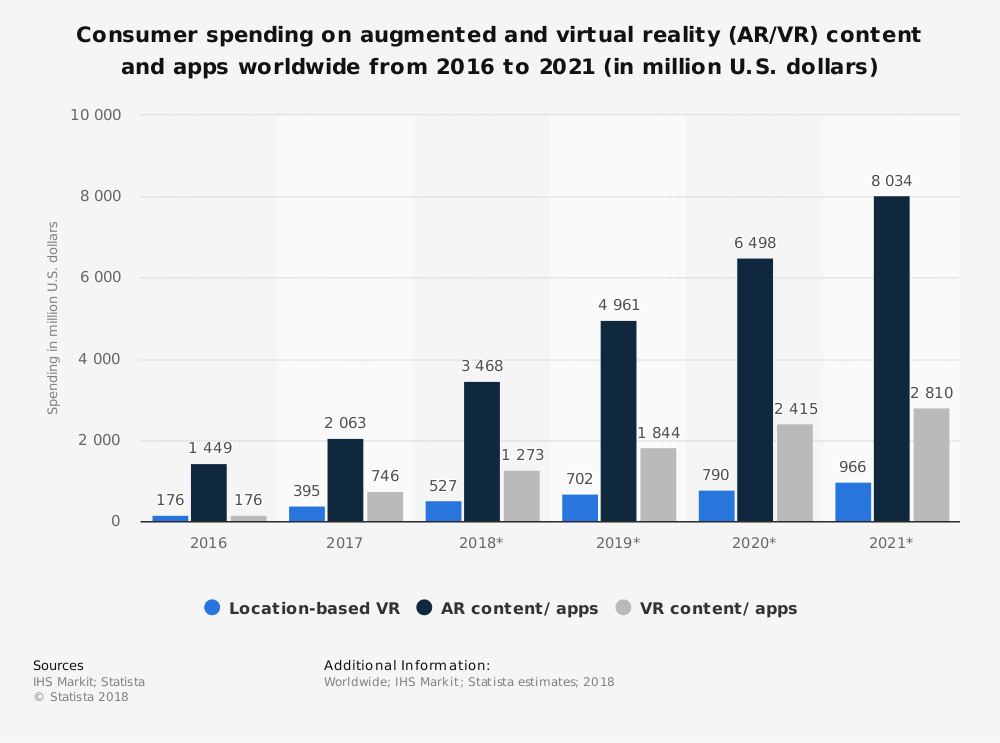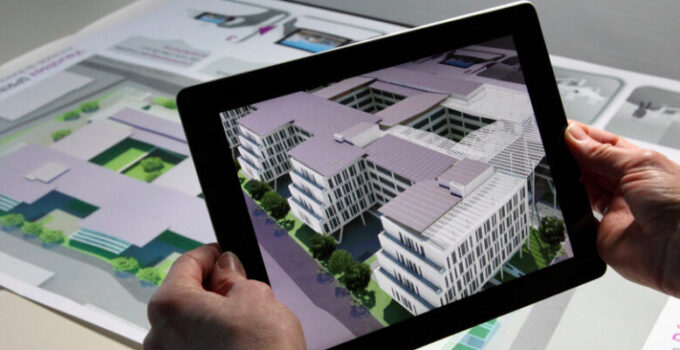Augmented reality is a reality that is digitally enhanced by technology. Although the technology has been around for many years now, the use of it in today’s world is still a relatively new concept. AR can be used to improve presentations which are not only exciting for you but also quite impressive for your audience.
Let’s take a look at what AR is. AR is when a virtual image is deployed over real-world objects. This is done via input received from a smartphone camera or other input devices such as smart glasses. Unlike Virtual reality, AR does not completely change your surroundings but enhances it. In AR, your real-world environment is modified via computer-generated objects. It expands your physical worlds by adding on top layers of information such as sounds, videos, and graphics. By doing this, AR changes the perception of reality. 3D models are directly projected into our lives in real-time and locations thanks to the use of GPS, which is why AR has had a significant impact on our social habits. As we can see from the statistics below, apps which feature AR content have increased rapidly over the years which indicated that this type of technology is not only changing the way consumers behave but also the longevity of it. It is estimated that in 2024 spending on AR will be about 8 million dollars.

Here are a few ways AR can help you in your presentation:
AR and interactive information
One of the most fundamental capabilities of AR is how it can make static locations and images come to life thanks to animation and graphics. AR has allowed many different industries to offer their customers more information by simply using their smartphones. For example, just pointing your smartphone at a movie poster using the AR technology on your phone, which is typically combined with an app will begin to play the movie trailer.
AR is also used in home improvements and can generate 3D models of furniture to see how they would fit into a specific space. The use of AR will help you demonstrate your point more clearly by using images on the screen, which they can explore further. If you are presenting a product, AR can help your audience explore the product further via an app. It will let them gain real-time information which they can see and interact with rather than simply sitting there and hearing the information. Our brains are indeed wired to absorb visual information more quickly than text, which is why AR can be quite beneficial in these types of situations.
Improve remote presentations via the use of AR

Img source: thementormethod.com
The ability to connect via technology has also brought upon new ways of working, such as working remotely. Remote working promotes flexibility, creativity, and convenience but is a disadvantage to presentations. When watching a presentation, the way a person presents, their mannerisms, body language and the visuals aids they use play an important role in how we absorb the information. As humans, we subconsciously pick up on these small details. However, when presenting via webcam, delivering your presentation to your audience means only you or your visuals can be on the screen at any one time, that was until AR. AR allows virtual presenters to merge their visuals onto the screen along with themselves, which means they don’t lose the benefit of either.
AR gives presenters the advantage of explaining their concept while using graphics that have been designed to appear on the screen alongside them at the right time. The final result will seem like green screen technology without the need for an actual green screen.
AR and audience integration

Img source: ge.com
As a presenter, one of the biggest obstacles is making your audience feel engaged with your presentation. Due to the constant connection to social media and the internet, the battle of getting and keeping your audience’s attention has never been harder. With AR, however, you can now invite your audience to be a part of your presentation. Rather than talking at them, you can offer them the opportunity to participate in your presentation directly and explore what you are sharing with them. Not only will this make your presentation engaging and compelling, but it also offers the audience a sense of control in their own learning experience. Furthermore, experiencing your ideas in this way will prompt emotional responses and connections from your audience, which you wouldn’t usually get from conventional forms of presentation.




